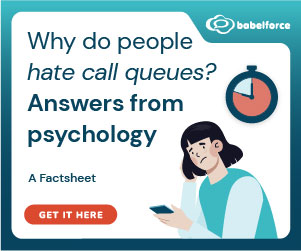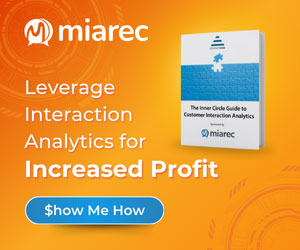Customer segmentation is one of the most important marketing tools at your disposal, because it can help a business to better understand its target audience. This is because it groups customers based on common characteristics.
These groups can be used to build an overview of customers. This data is like gold dust for many organisations.
Once you know your audience, the buyer persona, and how they spend their money, you’re in a strong position to gain their custom and retain it.
So, in this article, we’ll look into what customer segmentation is, and how it can help your business in the long-term.
What is Customer Relationship Management (CRM)?
CRM or customer relationship management is all about a business building strong, valuable relationships with its customers. It references the principles and practices put in place by a business when interacting with customers. CRM also includes customer lifecycle.
This refers to the various stages the customer goes through before, during, and after purchasing a product.
What’s more, CRM helps to streamline the customer segmentation process. It enables you to reach the customers who are most likely to buy and interact with your product.
An example of the positive benefits this could bring is that by carrying out market research in this way and gaining a more detailed overview of your customer base, you could target customers with new products in the future.
Common Types of Customer Segmentation
Here are some of the most common types of customer segmentation:
1. Demographic Segmentation
This is the first step in finding out who your customers are. A customer’s demographic is based on common characteristics. They can include things like gender identity, ethnicity, age, marital status, religious beliefs, and income. Information compiled can then be used to target specific people.
For instance, a perfume brand may wish to target new customers that fit into the demographic of women aged 18 to 25, living in the UK. Demographic data can be used to target that audience.
2. Geographic Segmentation
Geographic segmentation refers to where in the world your customers are. It can be as broad as the country, or as detailed as the city. This type of customer segmentation can be particularly useful for small businesses or for those who want to target a local audience.
This way, marketers can ensure they’re targeting customers who may actually use their product or service, rather than cast a wide net and advertise to unwanted customers.
3. Behavioural Segmentation
Behavioural segmentation is based on the customer’s habits and lifestyle, in particular, their buying habits. Different age groups, for example, tend to spend their money in different ways, so brands need to be aware of who exactly is buying their product.
Organisations can use automation to gather data from their website and social media to establish their customers’ buying habits. This can then be used to their advantage in the future when launching new products.
4. Psychographic Segmentation
Psychographic segmentation focuses more on the personality of the consumer, including their opinions and interests. This way of establishing the customer base is often used by organisations and brands with a certain philosophy or way of life.
So, a vegan food brand wishing to target vegans may advertise to people who like vegan social pages or other similar products.
Here’s how psychographic segmentation differs from demographic segmentation:
5. Customer Journey Segmentation
This is similar to behavioural segmentation, but it follows more of the customer journey and notes which stage they’re in. For example, a customer journey might begin with an individual searching for a particular service.
Next, they would move to exploring interesting services they have found. They would make a choice as to which serves them best, and based on that choice, order the service.
Customers in every stage can engage with content, and segmentation aims to build customer data based on this. Touchpoints, pain points, and behavioural patterns can all be tracked and used in the future.
Benefits of Customer Segmentation
Here are some of the main benefits of customer segmentation:
- Targeted marketing messages to the right people – Without customer segmentation, marketing can be like throwing out a wide net and seeing what comes back. In other words, you’re not always targeting those who are actually interested in your product.
For example, using behavioural targeting can utilise customer information to make sure your services are relevant to them. - Focuses on the most profitable customers – Another benefit is that it focuses on your most profitable customers. This is because you’re targeting potential customers who are interested in your product, or customers who typically repurchase. Those are the customers that you want to retain! This personalised messaging makes them more likely to repeat their custom, too. In fact, a survey by Epsilon revealed that 80% of consumers are more likely to make a purchase when brands offer personalised experiences.
- It can improve customer service – By using customer segmentation, you will gain a better understanding of your customers. With this in mind, you can personalise your marketing approach. For example, if your customers celebrate a specific holiday such as Christmas, Diwali, or Eid, you may wish to tweak your marketing to suit this.
You’ll also need to be available when those customers do get in touch. Using tools like RingCentral can ensure you never miss a direct message or phone call again. You can engage with customers via social media, phone, and messaging, or a combination of all communication platforms.
- Better ROI from Marketing – Customer segmentation can improve a business’s bottom line. Personalised marketing can make sure your marketing campaigns are incredibly effective. Braze Magazine found that the marketing campaigns they’d sent to segmented audiences saw 200% greater conversions than those sent to broad audiences.
- Upsell Other Products or Services – If you’re an independent ecommerce business selling earrings, you can assume that your audience may also be interested in your new necklaces. Using customer segments, you can target those people that had previously purchased earrings, and upsell your necklaces. When a company has similar products in their catalogue, this can be an easy way of targeting people who they think are likely to make a purchase. It’s similar to how Amazon works when it pulls up a ‘you may also like’ section after you make a purchase.
- Leads to Price Optimisation – Customer segmentation data will help you to better understand your ideal customers, including the price they are willing to pay for your product. Based on their typical spending psychology, you’ll be able to competitively price your product. You can also use this data to test several pricing options to see which one works best.
Importance of Customer Segmentation
Sometimes a one-size-fits-all policy doesn’t apply, and that’s often the case when it comes to marketing. Customer segmentation is about actively trying to group customers together based on their buying habits and behaviours. This allows you to better target your audience with relevant messaging.
So, why is customer segmentation so important to a business? To start, building a strong relationship with customers is crucial. This method of grouping customers together means that you can make the buying experience a more customised one.
When consumers feel as though they’re being listened to and appreciated, they’re more likely to stay engaged with the brand, whether that’s through liking social posts or buying from the website.
In turn, this helps to build your brand identity and establish yourself among your competitors. Using software like RingCentral can aid the customer engagement process.
Not only does it offer workforce management tools to control inbound calls, but it also allows agents to access experts to ensure all customer queries are being answered as accurately and efficiently as possible.
Another reason why customer segmentation is important is that you may begin to unearth new ideas based on what your customers are saying. Consumers are constantly changing their buying habits, and brands are tasked with predicting these changes before they happen.
When you utilise customer segmentation, you’ll never miss out on what’s trending. You can add to the product development process based on your customer’s preferences.
How to Segment Customers
When it comes to segmenting customers, the first step to take is to look at your business models and what you are trying to achieve. What key principles do you want customers to engage with? Here are the main factors to consider when segmenting your customers:
What Problems are you Trying to Solve?
Creating groups of customers can be useful when it comes to solving specific problems. It can help with:
- Better ROI on content marketing budget
- Improved customer support
- Better customer retention
Consider what problems you’re trying to solve in order to best figure out the different groups you want to segment your customers into.
What do you Want to Gain?
What do you want to gain from segmenting your customers? Decide on how many groups you wish to put your customers into based on what’s most important to you and how it ties in with your marketing strategy.
You can increase this in the future if your customer base widens. You may also wish to analyse your data across departments, for example, creating segmentations for Digital Marketing, Finance, Sales, etc. This means you’ll need to make the data available for all departments to work from.
Gathering Data
Data collection is perhaps the most crucial part of customer segmentation. To begin, you can speak to experts, customers, and your customer service team. It’s also worth researching competitors. You need to create a plan detailing where each variable can be found, and how you will go about extracting this actionable data. Look at:
- Your website visitors
- Your social media pages
- Social pages of your competitors
- Market data
From each data set, you should begin to build a clearer picture of who your customers are, and use data analysis to figure out which segments they best fit into.
Customer Segmentation vs. Market Segmentation
There can sometimes be confusion between customer segmentation vs market segmentation. Some consider customer segmentation to be a subset of market segmentation.
The two do overlap, but each has its own uses. While customer segmentation is about grouping customers together based on their characteristics and behaviour, market segmentation focuses on grouping customers by the products or services they purchase, such as software.
Some businesses may choose to do one or the other, depending on what product or service they are offering. Both aim to refine their audience, which is the main focus of segmentation, but one creates person-based categories while the other focuses more on market segment data.
Author: Guest Author
Published On: 4th May 2021 - Last modified: 17th May 2021
Read more about - Guest Blogs, RingCentral





































